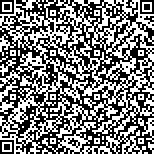| 摘要: |
| 采用微卫星DNA分子标记方法对中国南部沿海多鳞鱚(Sillago sihama)广西北海、广东湛江、汕尾及海南三亚4个野生地理群体进行了遗传多样性及遗传分化等研究。结果表明: (1) 用于研究的34对微卫星引物在4个群体中具有丰富的多态性, 有效等位基因数介于1.71—20.46之间, 多态信息含量PIC介于0.40—0.95之间。4个群体总的平均期望杂合度(He)为0.598, 观测杂合度(Ho)为0.572, SY群体的杂合度最大(He=0.606, Ho=0.623), SW群体的最小(He=0.586,Ho=0.508)。(2) 群体间F-统计量分析表明, 群体遗传分化处于高度分化水平(Fst平均值为0.306); 基于奈氏遗传距离(DA)构建的NJ和UPGMA聚类树均显示地理位置相邻的群体聚在一起。 |
| 关键词: 多鳞鱚 微卫星DNA 遗传多样性 遗传分化 |
| DOI:10.11693/hyhz201302001001 |
| 分类号: |
| 基金项目:国家自然科学基金资助, 31101904 号, 31201996 号; 广东省科技计划项目资助, 2010A020307001-84 号; 广东省大学生创新实验项目, 1056610003 号 |
附件 |
|
| SSR ANALYSIS IN FOUR WILD POPULATIONS OF SILVER SILLAGO SILLAGO SIHAMA |
|
GUO Yu-Song, YAN Cheng-Zhong, ZHANG Yu-Lan, ZHENG Jin-Nan, XU Yuan-Min, DU Tao, WANG Zhong-Duo, LIU Chu-Wu
|
|
Key Laboratory of Aquaculture in South China Sea for Aquatic Economic Animal of Guangdong Higher Education Institutes, Fisheries College, Guangdong Ocean University
|
| Abstract: |
| Sillago sihama is the most known species in genus Sillago. It is naturally distributed in Indo-West Pacific and found in all Chinese waters including East China Sea, Yellow Sea, Bohai Sea, South China Sea, and the Northern Bay. In China, it is a common marine food fish species, and the supply of this fish relies on capture from the wild. The resources have reduced dramatically. It is necessary to reveal genetic diversity and population structure of wild stocks before carry out breeding and farming. Genetic diversity of 4 wild geographical populations of S. sihama in the southern coast waters of China, i.e. four populations of Zhanjiang (ZJ), Beihai (BH), Shanwei (SW), and Sanya (SY), were investigated using 34 microsatellite DNA loci. The allele numbers (Na), effective allele numbers (Ne), expected heterozygosity (He), observed heterozygosity (Ho), polymorphism information contents (PIC) and Hardy-Weinberg equilibrium were estimated to characterize genetic diversity. The results show that all loci were polymorphic among populations. Test of departures from Hardy-Weinberg equilibrium indicated that 7 to 12 loci in each population were significantly deviated from Hardy Weinberg equilibrium. All loci are not significant deviation from Hardy-Weinberg equilibrium in all 4 populations. The Ne ranged from 1.71 to 20.46, and PIC ranged from 0.40 to 0.95. The average He was 0.598, and average Ho was 0.572 in four populations. The SY population showed the highest heterozygosity (He = 0.606, Ho = 0.623), while the SW population showed the lowest value (He = 0.586, Ho = 0.508). The results of genetic distances and genetic similarity show that the genetic relationship of BH and ZJ populations was the most closed, while that of SY and SW populations was opposite. The F-statistics analysis showed that the four populations were highly differentiated (Fst mean value is 0.306). There was only a very small gene flow between populations. NJ and UPGMA clustering tree based on DA genetic distances demonstrated that the stocks of adjacent geographical position clustered together. |
| Key words: Sillago sihama microsatellite DNA genetic diversity genetic differentiation |
